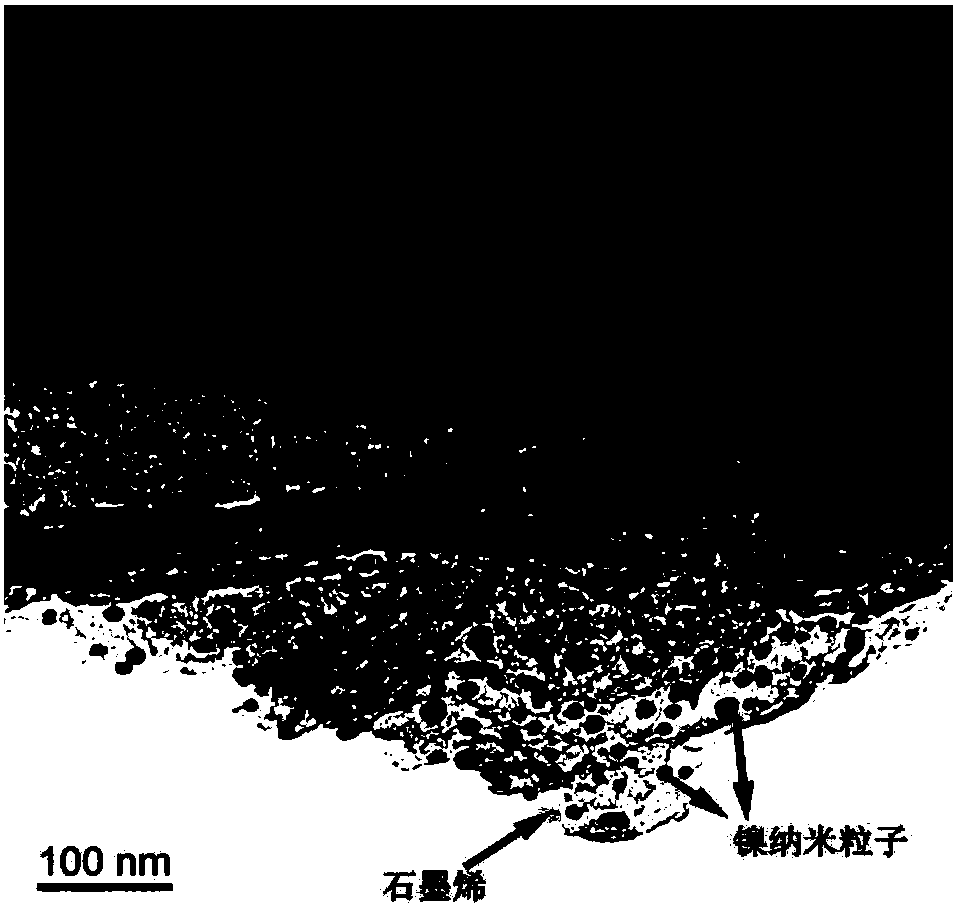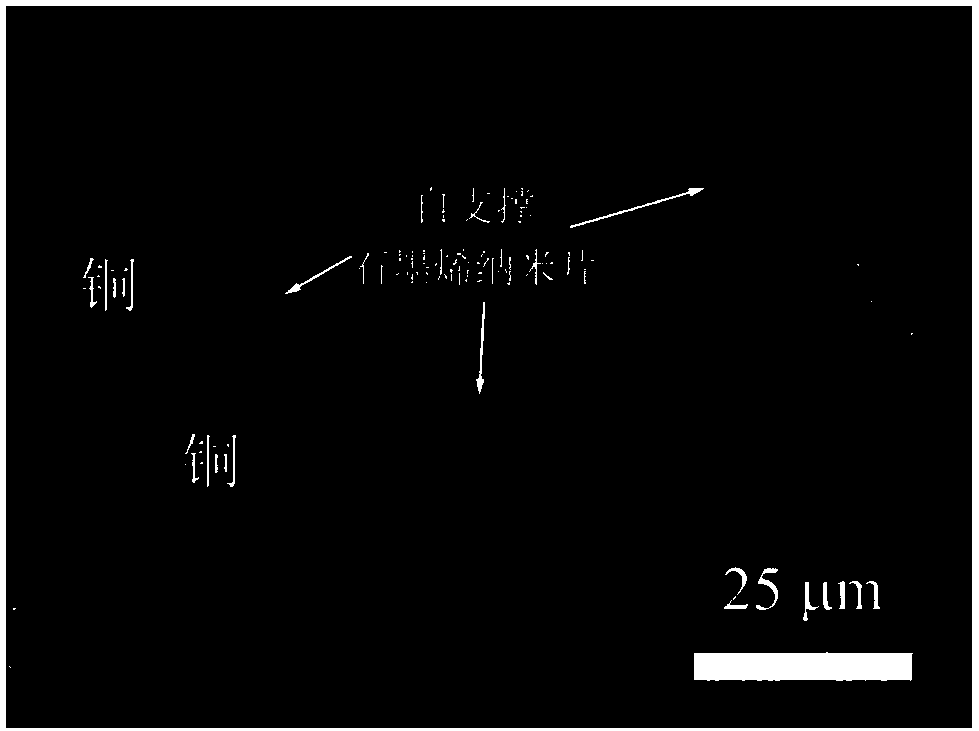Self-supporting graphene nano-sheet surface-modified copper-based composite and preparation method and application thereof
A graphene nanosheet, copper-based composite material technology, applied in nanotechnology, nanotechnology, metal material coating process and other directions, can solve the problem of failure to effectively prevent direct contact, increase the porosity of composite materials, and weaken the strengthening effect of graphene and other problems, to achieve the effects of excellent self-lubricating performance, improving interfacial bonding strength, excellent mechanical properties and self-lubricating performance
- Summary
- Abstract
- Description
- Claims
- Application Information
AI Technical Summary
Problems solved by technology
Method used
Image
Examples
Embodiment 1
[0031] figure 1 Schematic diagram of the structure of the self-supporting graphene nanosheet surface-modified copper matrix composite. Among them, 1 is a graphene nanosheet, 2 is a copper matrix, 3 is a graphene / copper composite material, 4 is a self-supporting graphene nanosheet, and 5 is a self-supporting graphene nanosheet surface-modified copper-based composite material. The self-supporting graphene nanosheet surface-modified copper-based composite material 5 of the present invention is composed of a graphene nanosheet 1 and a copper matrix 2, and a part of the graphene nanosheet is uniformly dispersed inside the copper matrix to form a graphene / copper-based composite material 3, A part is uniformly dispersed on the surface of the material, and a part of the planes of these graphene nanosheets is embedded in the interior of the graphene / copper-based composite material, and a part is exposed on the surface of the graphene / copper-based composite material, forming self-suppor...
Embodiment 2
[0033] Ultrasonic disperse graphene oxide powder (purchased from Nanjing Xianfeng Nano Material Technology Co., Ltd.) in deionized water to form 600ml of dispersion liquid with a concentration of 0.83mg / mL, add 15ml of dilute ammonia water with a concentration of 0.55mol / L, and stir thoroughly. Add dropwise 50ml of Ni(NO 3 ) 2 aqueous solution. After reacting at room temperature for 1 hour, filter, rinse with deionized water, and dry the product, and then react the dried product at 500° C. for 1 hour under an argon protective atmosphere to obtain graphene nanosheets modified on the surface of nickel nanoparticles.
[0034] figure 2 It is the TEM photograph of the microstructure of the nickel nanoparticles surface-modified graphene nanosheets obtained in this example. from figure 2 It can be seen that the size of nickel nanoparticles is 10-20nm, which are uniformly pinned on the plane of graphene nanosheets. The mass fraction of nickel in the graphene nanosheets modified...
Embodiment 3
[0036] The difference with Example 2 is: the graphene oxide, ammonia and Ni(NO 3 ) 2 The concentration of the aqueous solution is 1mg / mL, 0.6mol / L, 30mmol / L respectively, the reaction time at room temperature is 4 hours, and the reaction time at high temperature is 600°C, and the time is 2 hours to obtain a nickel nanoparticle surface with a nickel mass fraction of 22.8%. Modified graphene nanosheets.
PUM
| Property | Measurement | Unit |
|---|---|---|
| size | aaaaa | aaaaa |
| diameter | aaaaa | aaaaa |
| dispersion coefficient | aaaaa | aaaaa |
Abstract
Description
Claims
Application Information
 Login to View More
Login to View More - R&D
- Intellectual Property
- Life Sciences
- Materials
- Tech Scout
- Unparalleled Data Quality
- Higher Quality Content
- 60% Fewer Hallucinations
Browse by: Latest US Patents, China's latest patents, Technical Efficacy Thesaurus, Application Domain, Technology Topic, Popular Technical Reports.
© 2025 PatSnap. All rights reserved.Legal|Privacy policy|Modern Slavery Act Transparency Statement|Sitemap|About US| Contact US: help@patsnap.com



